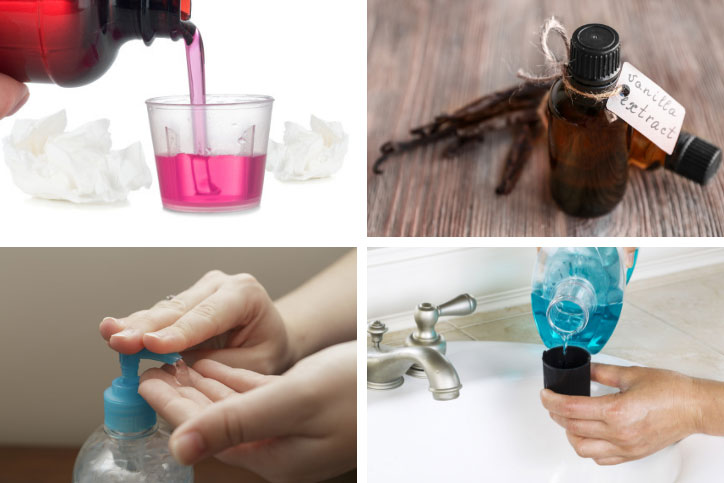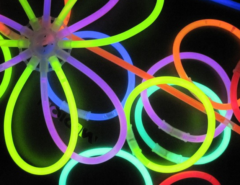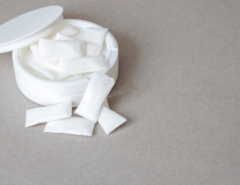Think about how many places in your home where alcohol can be found. The obvious place is the liquor cabinet. But, what about the less obvious places? You might be surprised to find alcohol hiding in your medicine cabinet, kitchen, bathroom, and bedroom. Wonder how that could be? Read below to learn more about the hidden sources of alcohol in our homes.
Alcoholic Beverages
Alcohol is present in many households in the form of “adult beverages.” The amount of alcohol varies in each type of beverage. Beer, wine, and hard ciders contain 5-15% alcohol. Most “hard liquors” like vodka, gin, and whiskey, contain 40-50% alcohol. The effects of drinking alcohol are directly related to the concentration of alcohol and the amount consumed. Drinking small amounts of hard liquor will produce effects similar to consuming larger amounts of beer or wine.
Medicine
Some commonly used liquid medicines contain alcohol. The concentration is usually very low, and many people don’t even know it’s there. But, this must be taken into consideration in situations when too much medicine might have been taken. Some of the effects might be from the alcohol, not the medicine itself. Always read the label for the correct dosage to avoid side effects.
Cooking Extracts
Vanilla extract is found in most kitchens, so it might surprise you to learn that pure vanilla extract contains 35-45% alcohol. This is almost as much alcohol as we find in vodka. Lemon, orange, and mint extracts contain up to 90% alcohol. Most recipes call for only small amounts of these extracts, and households commonly have the small bottles on-hand. Keep these bottles out of children’s reach. These extracts smell good, but can be dangerous if ingested in large amounts.
Personal Care Products
Mouthwashes can contain 15-30% alcohol. The concentration of alcohol in hairspray varies from brand to brand, but can range from 25-50% alcohol. Perfumes contain about 50% alcohol, while aftershaves range from 15-90%. As you can see, there is a very wide range of concentrations depending on the product and brand. These products are often left out in plain sight and within easy reach. The Maryland Poison Center suggests keeping these types of products out of sight and away from young children.
Hand Sanitizers
Commonly found in homes as well as schools, hand sanitizers can contain 60-90% alcohol. They are often scented, with cute designs on the bottle, which might lead young children to think they are safe to eat or drink.
A small child licking a squirt of hand sanitizer from their hand will not cause any harm. However, a teenager who drinks large amounts of hand sanitizer could get drunk.
Symptoms
The effects of consuming these hidden sources of alcohol will depend on the amount and the concentration ingested. Symptoms can range from mild to severe.
Mild symptoms include:
- Drowsiness
- Slurred speech
- Nausea and vomiting
- Dizziness
- Difficulty walking
Severe symptoms can be life-threatening, and include:
- Decreased breathing
- Coma
Young children react differently to alcohol than adults. Children may experience low blood sugar after ingesting alcohol. If their blood sugar gets too low, it can lead to seizures and coma. These effects can last for up to 24 hours, but it is important you call the poison center before symptoms start.
Storage
Alcoholic beverages must be stored safely. Special care should be taken when alcohol is mixed with juices or soda, because young children might think it is juice for them. All other alcohol-containing products should be stored out of sight and reach of young children.
If you think someone has ingested an alcohol-containing product, call the poison center right away at 1-800-222-1222. Pharmacists and nurses will do calculations based on the amount ingested and the concentration of alcohol in the product to determine what steps should be taken. Alcohol is absorbed quickly, so call right away. Do not wait for symptoms!





Leave a Reply